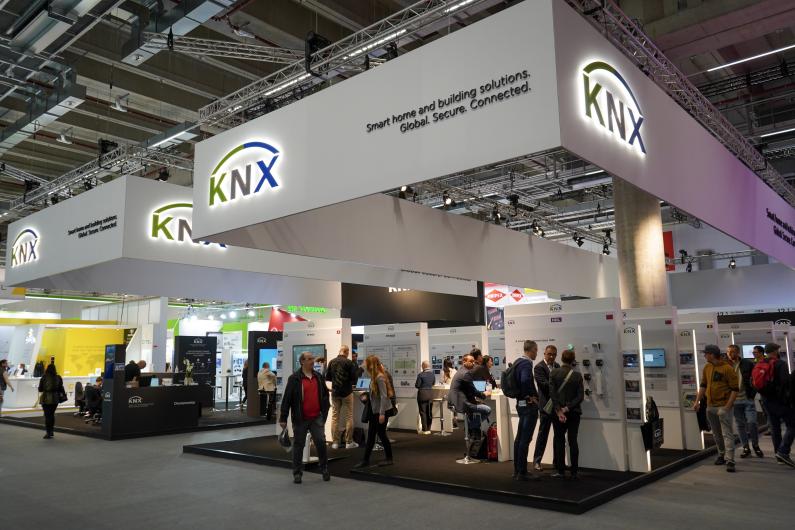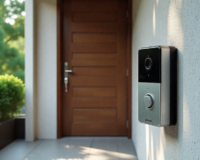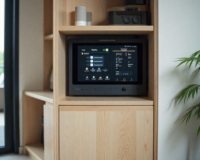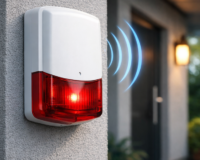KNX, a globally recognized standard for building automation, has been widely adopted across various sectors due to its ability to integrate and control diverse systems through a single communication protocol. While its applications in residential settings are well-known, KNX also plays a crucial role in commercial and public buildings, particularly in office buildings, hotels, and hospitals. These environments have unique requirements for energy efficiency, security, comfort, and operational efficiency, all of which KNX systems can address effectively.
This article explores the applications of KNX technology in these three specific settings, highlighting how it enhances building management, improves user experience, and contributes to sustainability goals.
Table of Contents
ToggleApplications of KNX in Office Buildings

1. Energy Efficiency and Cost Savings
Office buildings are significant consumers of energy, particularly for lighting, heating, ventilation, and air conditioning (HVAC) systems. KNX systems can optimize energy use by integrating and controlling these systems in a way that reduces waste and lowers operating costs.
Lighting Control:
- Daylight Harvesting: KNX systems can adjust artificial lighting based on the amount of natural light entering the building. Light sensors detect changes in daylight and dim or brighten indoor lights accordingly, reducing energy consumption.
- Occupancy Sensing: Motion detectors linked to KNX systems can turn lights on or off based on the presence of people in a room. This prevents lights from being left on in unoccupied areas, further conserving energy.
HVAC Optimization:
- Zone Control: KNX allows for precise control of temperature in different zones within an office building. Individual rooms or areas can be heated or cooled based on occupancy, ensuring that energy is not wasted on empty spaces.
- Energy Monitoring: By integrating energy meters with the KNX system, building managers can monitor real-time energy usage and identify inefficiencies. This data can be used to adjust settings and improve overall energy performance.
2. Enhanced Comfort and Productivity
The work environment in an office building directly impacts employee comfort and productivity. KNX systems contribute to creating an optimal work environment through advanced control of lighting, climate, and shading.
Climate Control:
- Personalized Settings: In open-plan offices, KNX allows for personalized climate control at individual workstations. Employees can adjust temperature and airflow to their comfort without affecting the entire office.
- Automatic Adjustments: KNX systems can automatically adjust HVAC settings based on external weather conditions, maintaining a consistent and comfortable indoor environment.
Lighting Scenes:
- Customizable Lighting: Different areas of an office building may require different lighting conditions. KNX allows for customizable lighting scenes that can be adjusted for meetings, presentations, or general office work, improving the overall work experience.
Shading Control:
- Automatic Blinds: KNX-controlled blinds can be programmed to adjust based on the time of day, sunlight intensity, or room occupancy. This not only improves comfort by reducing glare but also contributes to energy savings by controlling the amount of heat entering the building.
3. Security and Access Control
Security is a critical concern for office buildings, and KNX systems offer comprehensive solutions for monitoring and controlling access.
Access Control:
- Integration with Security Systems: KNX can integrate with access control systems, allowing for centralized management of door locks, entry points, and surveillance cameras. This integration enhances security by providing real-time monitoring and the ability to respond quickly to incidents.
- Visitor Management: KNX systems can be connected to visitor management systems, ensuring that only authorized personnel have access to specific areas of the building.
Alarm Systems:
- Fire and Intrusion Alarms: KNX supports the integration of fire and intrusion alarms, providing a centralized alert system that can trigger appropriate responses, such as unlocking emergency exits or notifying security personnel.
- Remote Monitoring: Building managers can remotely monitor security systems through KNX, receiving alerts and controlling systems from a central location or even via mobile devices.
Applications of KNX in Hotels
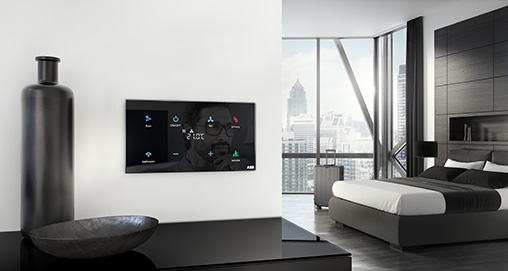
1. Personalized Guest Experience
In the highly competitive hospitality industry, offering a personalized and comfortable guest experience is essential. KNX systems enable hotels to create customized environments for their guests, enhancing their stay and increasing satisfaction.
Room Control Systems:
- Guest Room Management: KNX allows guests to control lighting, climate, and entertainment systems from a single interface, such as a touch panel or mobile app. This provides a seamless and intuitive experience, making it easy for guests to adjust their environment to their preferences.
- Preset Scenes: Hotels can offer preset scenes, such as “Relax,” “Work,” or “Sleep,” that automatically adjust the room’s lighting, temperature, and curtains to create the desired ambiance.
Climate Control:
- Energy Efficiency: KNX systems can automatically adjust room temperature based on occupancy. When a room is unoccupied, the system can reduce heating or cooling to save energy, while quickly restoring comfort when guests return.
- Individual Preferences: Returning guests can have their previous settings stored and reapplied automatically during future stays, providing a personalized experience that feels like home.
Lighting and Shading:
- Mood Lighting: KNX allows hotels to offer mood lighting options that enhance the guest experience. For instance, soft lighting can be used in the evening to create a relaxing atmosphere.
- Automated Curtains and Blinds: Guests can control curtains and blinds with a touch of a button, or the system can adjust them automatically based on the time of day or sunlight intensity.
2. Operational Efficiency
KNX systems contribute to the operational efficiency of hotels by streamlining management processes and reducing energy consumption.
Centralized Management:
- Building Management Systems (BMS): KNX can be integrated into a hotel’s BMS, allowing for centralized control and monitoring of all systems, including HVAC, lighting, and security. This integration simplifies management and ensures that all systems work together efficiently.
- Energy Monitoring: By tracking energy use in real-time, hotels can identify areas for improvement and implement strategies to reduce consumption without compromising guest comfort.
Housekeeping Efficiency:
- Room Status Indicators: KNX can provide real-time updates on room status, such as whether a room is occupied or ready for cleaning. This information helps housekeeping staff optimize their workflow and ensure rooms are prepared for new guests promptly.
- Maintenance Alerts: The system can monitor equipment performance and send alerts when maintenance is required, reducing downtime and ensuring that all systems are functioning correctly.
3. Safety and Security
Ensuring the safety and security of guests is a top priority for hotels, and KNX systems provide robust solutions for managing these aspects effectively.
Fire and Safety Systems:
- Integrated Fire Alarms: KNX systems can be integrated with fire alarm systems, enabling automatic responses such as unlocking emergency exits, turning on safety lighting, and notifying emergency services.
- Smoke and CO2 Detectors: These can be connected to the KNX system to provide real-time monitoring and alerts, ensuring a quick response to potential hazards.
Access Control:
- Room Access: KNX can integrate with keycard systems, ensuring that only authorized guests have access to their rooms. In case of lost keycards, access can be quickly revoked and new cards issued without compromising security.
- Surveillance: KNX systems can manage and monitor security cameras throughout the hotel, providing a central point of control for security personnel.
Applications of KNX in Hospitals
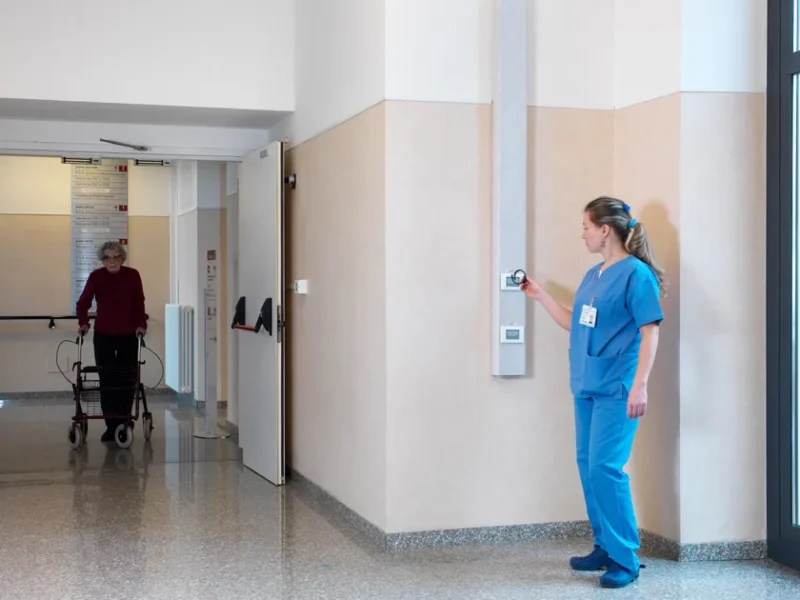
1. Enhancing Patient Comfort and Care
Hospitals are environments where comfort and care are paramount, and KNX systems can play a significant role in enhancing these aspects by automating and optimizing various functions.
Patient Room Control:
- Climate Control: KNX allows for precise control of temperature and ventilation in patient rooms, ensuring a comfortable environment that can be adjusted to meet individual patient needs.
- Lighting Control: Patients can adjust lighting levels to their comfort, whether they need bright light for reading or soft lighting for rest. KNX systems can also create preset lighting scenes for different times of day or activities.
- Entertainment Systems: KNX can integrate with in-room entertainment systems, allowing patients to control TV, music, and internet access from a single interface.
Automated Shading:
- Natural Light Management: KNX-controlled blinds can adjust automatically to provide optimal levels of natural light, reducing glare while ensuring patient comfort.
- Privacy Control: Patients can easily control window shades for privacy, enhancing their sense of security and comfort during their stay.
2. Operational Efficiency and Cost Management
Hospitals are complex facilities with high operational demands. KNX systems contribute to operational efficiency by automating processes, reducing energy consumption, and improving facility management.
Energy Management:
- HVAC Optimization: KNX systems can optimize heating, cooling, and ventilation based on occupancy and usage patterns, reducing energy costs while maintaining a comfortable environment.
- Lighting Efficiency: Automated lighting controls, including occupancy sensors and daylight harvesting, help reduce energy usage by ensuring that lights are only on when needed.
Facility Management:
- Centralized Control: KNX systems allow hospital administrators to monitor and control various building systems from a central location, improving response times and coordination.
- Maintenance Alerts: The system can monitor the performance of critical equipment, such as HVAC systems, and send alerts when maintenance is required, preventing breakdowns and reducing downtime.
3. Safety and Security
Ensuring the safety and security of patients, staff, and visitors is a critical concern in hospitals. KNX systems provide comprehensive solutions for managing security and emergency systems.
Fire and Safety Systems
- Integrated Fire Alarms: KNX can integrate with fire alarm systems, enabling automated responses such as unlocking emergency exits, activating safety lighting, and notifying emergency services.
- Patient Monitoring: KNX systems can support patient monitoring by integrating with nurse call systems and other medical devices, ensuring that staff can respond quickly to patient needs.
Access Control
- Secure Areas: KNX can manage access to secure areas, such as operating rooms, pharmacies, and laboratories, ensuring that only authorized personnel can enter these critical zones. This helps to maintain the integrity of these areas and protect sensitive information and resources.
- Visitor Management: Hospitals often have strict protocols for visitor access. KNX systems can be integrated with visitor management systems to control and monitor access to patient areas, ensuring that visiting hours are adhered to and that patients receive the appropriate level of privacy and security.
Surveillance and Monitoring
- CCTV Integration: KNX systems can manage and monitor surveillance cameras throughout the hospital, providing security personnel with a comprehensive view of the facility. This integration allows for real-time monitoring and quicker response times to potential security incidents.
- Emergency Response: In the event of an emergency, KNX systems can coordinate the activation of alarms, secure critical areas, and provide clear guidance to staff and patients through automated announcements and signage.
Integration and Interoperability in KNX Systems
One of the most significant advantages of KNX systems in office buildings, hotels, and hospitals is their ability to integrate with other building management systems (BMS) and technologies. This interoperability ensures that various systems work together seamlessly, enhancing overall building performance and user experience.
1. Integration with BMS
- Comprehensive Control: KNX can integrate with existing BMS platforms, allowing for centralized control of all building systems, including lighting, HVAC, security, and energy management. This integration provides facility managers with a unified interface to monitor and control all aspects of building operations.
- Data Sharing: KNX systems can share data with other systems within the BMS, providing valuable insights into building performance and helping to optimize operations. For example, energy usage data from KNX can be combined with occupancy data from other systems to improve energy efficiency strategies.
2. Interoperability with IoT Devices
- Smart Devices: KNX systems can be integrated with a wide range of Internet of Things (IoT) devices, from smart thermostats to connected lighting systems. This allows for enhanced functionality, such as voice control through smart speakers or remote monitoring via mobile apps.
- Scalability: The modular nature of KNX systems means that they can be easily expanded or upgraded to incorporate new IoT devices as they become available, ensuring that the building remains at the forefront of technological advancements.
3. Future-Proofing with KNX
- Adaptability: KNX’s open and standardized communication protocol ensures that the system can be adapted to future technological developments without requiring a complete overhaul. This future-proofing capability is particularly important in dynamic environments such as office buildings, hotels, and hospitals, where needs and technologies are constantly evolving.
- Longevity: KNX’s commitment to backward compatibility ensures that older devices can continue to operate alongside new ones, protecting the investment in the building’s automation infrastructure.
Case Studies of KNX Implementation
1. Office Building: The Modern Workspace
A multinational corporation implemented a KNX-based building management system in its headquarters, focusing on energy efficiency and employee comfort. The system integrated lighting, HVAC, and security controls across the entire building.
Results:
- Energy Savings: The company reported a 30% reduction in energy costs within the first year, primarily due to the implementation of automated lighting controls and optimized HVAC management.
- Employee Satisfaction: Surveys indicated that employees appreciated the ability to control their work environment, leading to increased comfort and productivity.
2. Hotel: The Luxurious Guest Experience
A luxury hotel chain adopted KNX systems across its properties to enhance the guest experience and improve operational efficiency. The system controlled in-room climate, lighting, and entertainment, as well as central management of energy and security systems.
Results:
- Guest Satisfaction: The hotel chain saw a significant increase in guest satisfaction scores, with many guests highlighting the personalized room controls as a key feature of their stay.
- Operational Efficiency: The hotel reported a 20% reduction in energy usage, attributed to the KNX system’s ability to adjust energy consumption based on room occupancy and usage patterns.
3. Hospital: The Advanced Healthcare Facility
A large urban hospital integrated KNX systems to improve patient comfort, optimize energy usage, and enhance security. The system included controls for patient room lighting and climate, centralized management of HVAC and energy systems, and integration with security and fire safety systems.
Results:
- Patient Comfort: Patients reported higher satisfaction with the environment in their rooms, particularly the ability to control lighting and temperature to their preferences.
- Energy Management: The hospital achieved a 25% reduction in energy costs, which was reinvested into further improving patient care and hospital facilities.
- Enhanced Security: The integration of KNX with the hospital’s security systems led to improved incident response times and overall security, ensuring a safe environment for patients, staff, and visitors.
Conclusion
KNX technology has proven to be an invaluable tool in the management and optimization of office buildings, hotels, and hospitals. Its ability to integrate and control a wide range of building systems through a single, standardized protocol makes it uniquely suited to these complex environments.
In office buildings, KNX enhances energy efficiency, comfort, and security, contributing to a more productive and sustainable work environment. In hotels, it enables personalized guest experiences while improving operational efficiency and reducing energy consumption. In hospitals, KNX systems play a critical role in enhancing patient comfort, optimizing facility management, and ensuring safety and security.
The flexibility, scalability, and interoperability of KNX systems make them an ideal choice for modern buildings that need to adapt to changing needs and technologies. As the demand for smarter, more efficient buildings continues to grow, KNX will remain at the forefront of building automation, delivering solutions that enhance both functionality and user experience.

